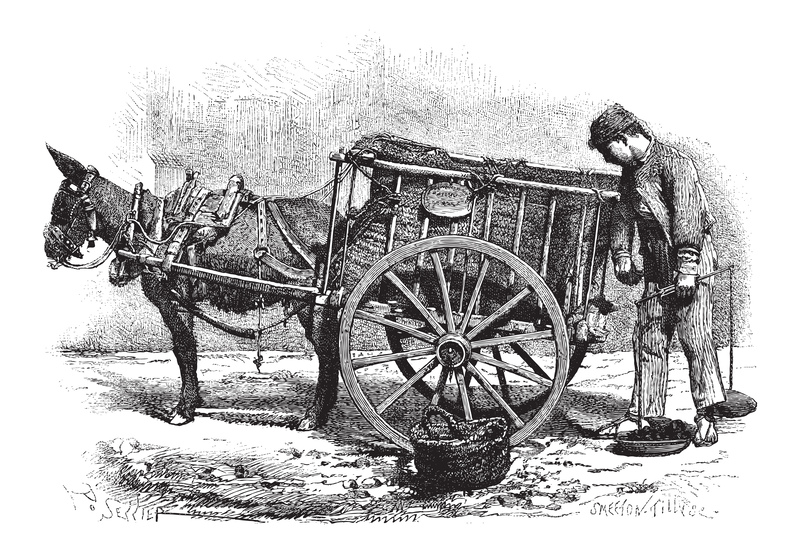Smart Strategies for Shrinking Household Waste Footprint
Understanding and reducing your home's waste is a crucial step toward a more sustainable lifestyle. With environmental issues increasingly on the global agenda, minimizing your household waste footprint not only benefits the planet, but can also save you money, declutter your home, and inspire your community. This comprehensive article explores actionable strategies for shrinking the waste your household generates and adopting a waste-conscious mindset.
Understanding the Household Waste Problem
Every year, households generate tons of waste, much of it ending up in landfills, oceans, or incinerators. Waste includes not just obvious garbage, but also food scraps, packaging, electronics, and other discarded materials. Contributing factors include overconsumption, lack of recycling, and habitual single-use product choices. According to the Environmental Protection Agency (EPA), food and packaging materials comprise a significant portion of municipal solid waste. By addressing these areas and making smart choices, families can dramatically reduce their environmental footprint.

Why Shrinking Your Household Waste is Important
- Reduces landfill contribution: Less waste means fewer items decomposing and releasing methane, a potent greenhouse gas.
- Protects ecosystems: Minimizing plastic and hazardous waste helps prevent pollution in waterways, soil, and natural habitats.
- Saves money: Buying less, reusing, and repairing can lead to significant cost savings.
- Builds healthy habits: Being mindful about consumption encourages healthier, more intentional living.
- Inspires community: Your actions can set an example and motivate others to follow suit.
Assessing Your Current Household Waste Footprint
The first step to reducing your home's waste output is understanding what you throw away. Spend a week documenting your trash and recycling. Separate your waste by category--food, paper, plastic, glass, electronics, hazardous items, and textiles. Ask yourself:
- Which item do you discard most?
- Are there products you can swap for reusable or compostable options?
- Which packaging materials dominate your bins?
A trash audit provides valuable insight into your waste patterns and reveals areas for impactful changes.
Smart Strategies for Reducing Household Waste
1. Embrace the Five R's: Refuse, Reduce, Reuse, Recycle, Rot
- Refuse: Politely decline unnecessary freebies, receipts, or disposable items--if you don't need it, say no.
- Reduce: Purchase only what you need and opt for quality items that last.
- Reuse: Invest in goods that can be used repeatedly, such as cloth grocery bags, stainless steel water bottles, and glass food containers.
- Recycle: Sort your recyclables appropriately and familiarize yourself with your local recycling rules.
- Rot: Compost food scraps and yard waste to return nutrients to the earth.
2. Shop Smarter to Minimize Household Waste
- Buy in bulk: Choose large packages to reduce excessive packaging. Bring your own containers to stores with bulk bins.
- Avoid single-use products: Invest in durable alternatives to items like paper towels, disposable plates, or plastic utensils.
- Select loose produce: Choose unpackaged fruits and vegetables--even better, bring your own produce bags.
- Shop at local farmers' markets: Local produce often involves less packaging and fewer food miles.
3. Implement Effective Home Composting
Composting can shrink your kitchen waste footprint by up to 50%! Set up a compost bin for:
- Fruit and vegetable peels
- Coffee grounds and tea leaves
- Eggshells
- Yard trimmings
- Shredded newspapers and cardboard (unwaxed, uncoated)
If you have limited space, try a small worm bin or bokashi system for indoor composting.
4. Plan Meals and Prevent Food Waste
- Make a shopping list and stick to it to avoid impulse buys.
- Store food properly to extend shelf life.
- Learn how to use leftovers in creative recipes.
- First in, first out: Organize your pantry and fridge so older items get used first.
By being intentional in the kitchen, you can significantly reduce food waste and prevent items from going bad.
5. Reimagine Recycling at Home
Recycling is essential, but the recycling stream is only as good as what goes in. Educate your household on what can and cannot be recycled locally. Rinse containers to avoid contamination and separate materials according to your area's guidelines. Search for local recycling centers for specialty items like:
- Electronics (e-waste)
- Styrofoam
- Plastic bags and film
- Batteries and light bulbs
When in doubt, check with your city's waste management website for updates.
6. Get Creative with Upcycling and Repurposing
- Transform jars and tins: Use old glass jars for storage or as plant pots.
- Repurpose textiles: Cut worn-out clothes into cleaning rags or sew them into reusable bags.
- DIY projects: Get the family involved in crafts that give "junk" a new lease on life.
7. Go Digital
- Opt for e-bills and digital subscriptions: Reduce paper waste by moving to online statements and magazine subscriptions.
- Switch to digital coupons and shopping lists: Avoid paper waste from receipts, notes, and printouts.
8. Commit to Reusable Alternatives
Adopting reusables is one of the easiest ways to cut waste:
- Water bottles and coffee mugs
- Cloth napkins and kitchen towels
- Reusable shopping and produce bags
- Beeswax wraps or silicone lids instead of plastic wrap
Shrink Waste Footprint in Specific Rooms
Kitchen
- Store leftovers in glass containers.
- Choose loose tea instead of tea bags.
- Make your own condiments to avoid excess packaging.
Bathroom
- Switch to bar soap and shampoo bars to avoid plastic bottles.
- Use bamboo toothbrushes and refillable floss containers.
- Try reusable cotton rounds for makeup removal.
Home Office
- Print only when necessary and use both sides of the paper.
- Recycle printer cartridges and outdated electronics.
Engage Every Household Member
Involving the entire family is key to long-term success. Discuss your goals, assign roles, and celebrate progress together. Offer kids small challenges like separating recyclables, or let them participate in DIY upcycling projects. The more invested everyone is, the more sustainable your efforts will become.
Track Your Progress and Set Goals
- Create a waste reduction goal, such as cutting landfill trash by 25% in six months.
- Keep track of weekly waste with a chart or journal.
- Reward progress to keep motivation high.
Beyond the Home: Community and Advocacy
Going beyond your own household waste reduction can have exponential effects. Join or start local campaigns, participate in neighborhood cleanups, and encourage your municipality to invest in better recycling and composting facilities. Share your journey on social media to raise awareness and motivate others to shrink their waste footprints.

Helpful Resources for Reducing Household Waste
- EPA: Recycling Basics
- Find local zero-waste stores
- ShareWaste: Compost sharing app
- Earth911: Recycling locator and tips
Conclusion: Small Steps, Lasting Impact
Shrinking your household waste footprint doesn't require a radical lifestyle overhaul--just small, mindful steps and a dedication to sustainability. By becoming aware of what you throw away and implementing these smart strategies, your family can significantly reduce waste, save money, and enjoy a healthier home and planet. Remember, the ripple effect of your choices can inspire your whole community to do the same. Start today and watch your waste footprint shrink, one smart strategy at a time!